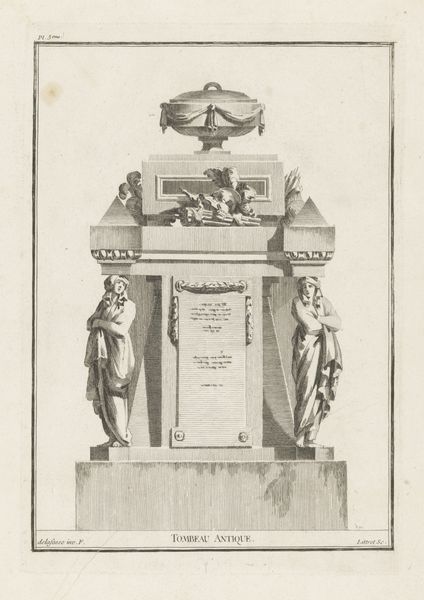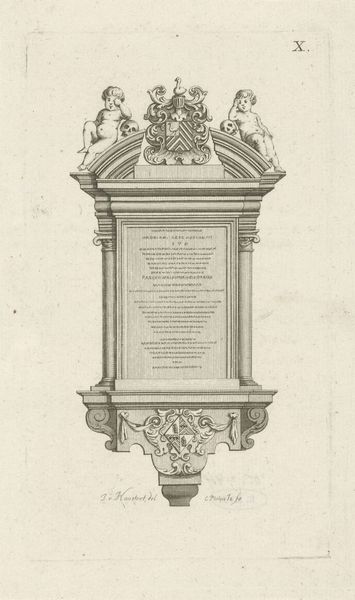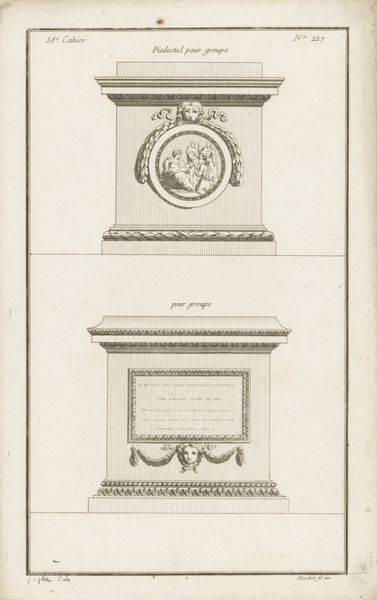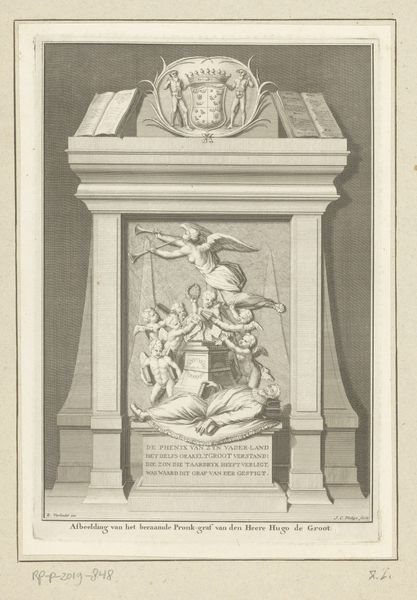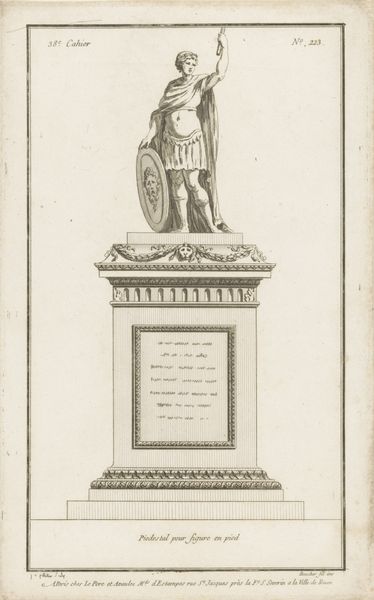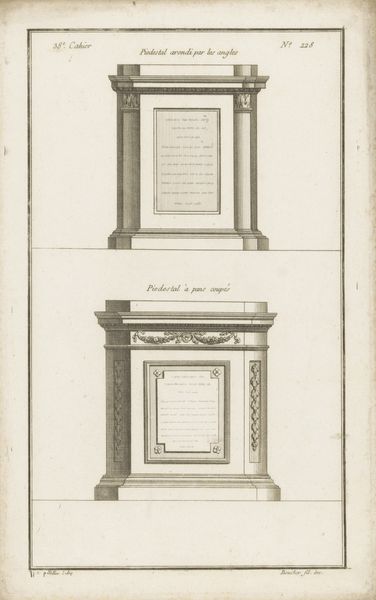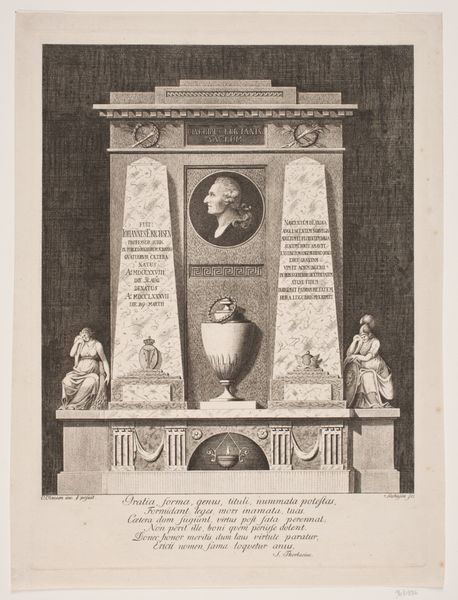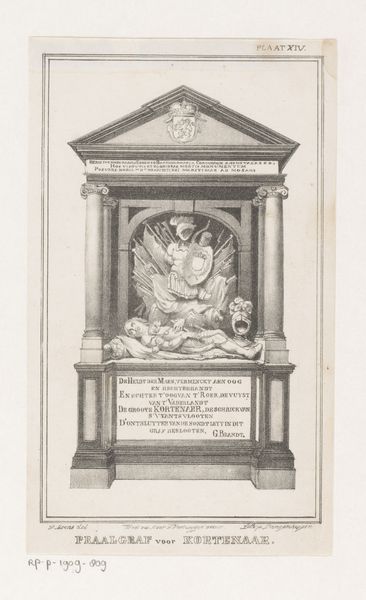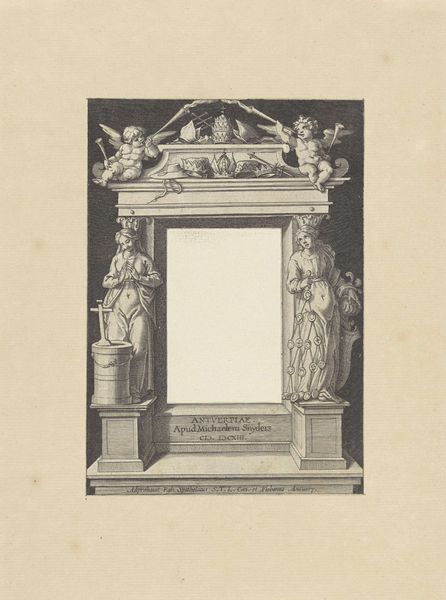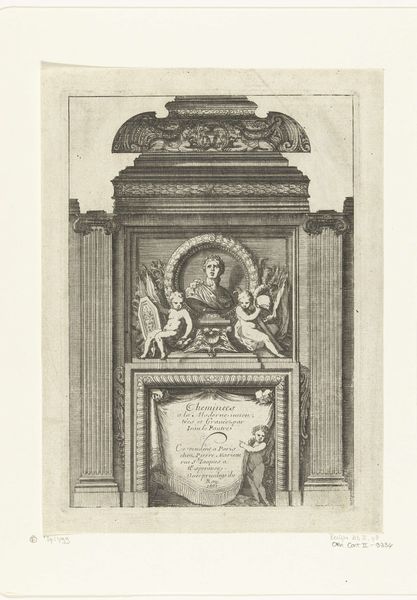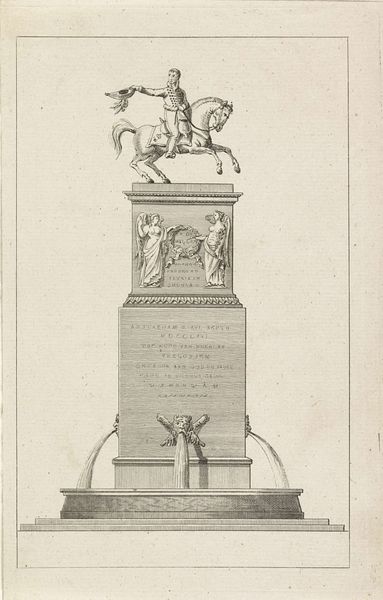
print, engraving, architecture
#
portrait
#
neoclacissism
# print
#
old engraving style
#
classical-realism
#
figuration
#
form
#
engraving
#
architecture
Dimensions: height 329 mm, width 205 mm
Copyright: Rijks Museum: Open Domain
Jean Pelletier created this print, "Voetstuk met twee staande vrouwen," using etching, likely in the late 18th century. The composition is strikingly symmetrical: two female figures flank a central, framed inscription, all set upon a tiered pedestal. The figures, rendered in delicate lines, appear to support the entablature above, their draped forms contrasting with the geometric regularity of the architecture. Pelletier employs a neoclassical visual language that evokes a sense of order and rationality. The etched lines, precise and controlled, emphasize the architectural elements and the idealized human forms. This aesthetic reflects the Enlightenment's emphasis on reason and the revival of classical ideals. Yet, the symmetry is not merely decorative. By structuring the composition around binary oppositions – the figures as opposed to the frame, the organic versus the geometric – Pelletier destabilizes any fixed meaning. The print becomes a site of interplay between opposing forces, reflecting a broader philosophical interest in the dynamic relationship between nature and artifice, order and chaos. This tension invites ongoing interpretation and reflection.
Comments
No comments
Be the first to comment and join the conversation on the ultimate creative platform.
